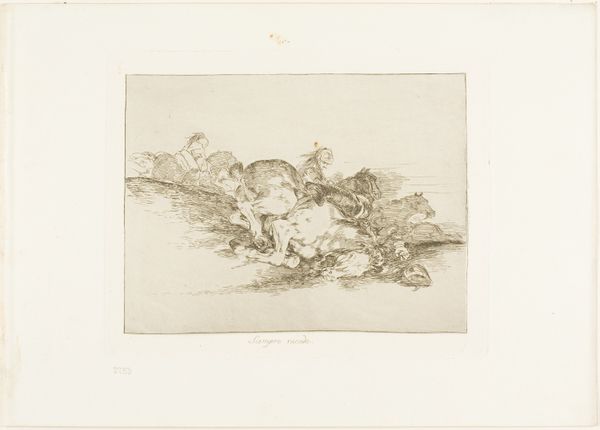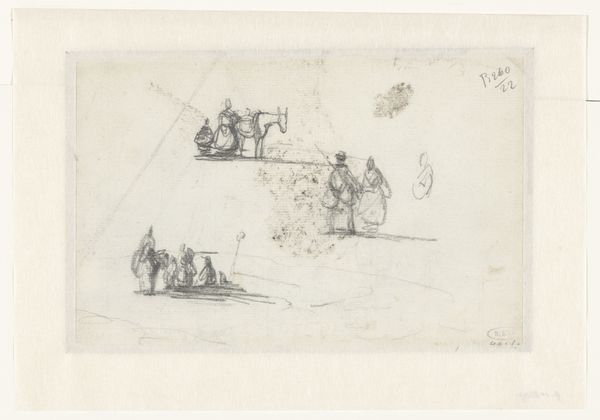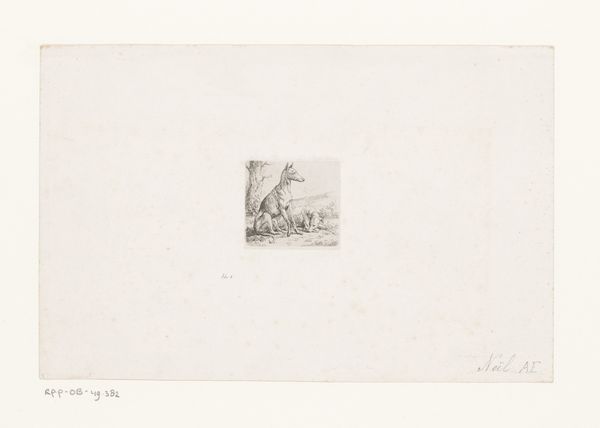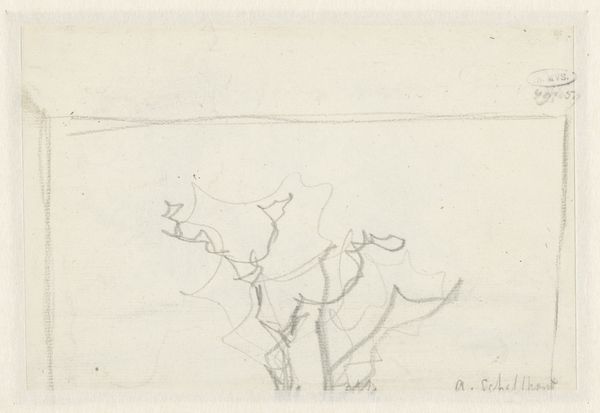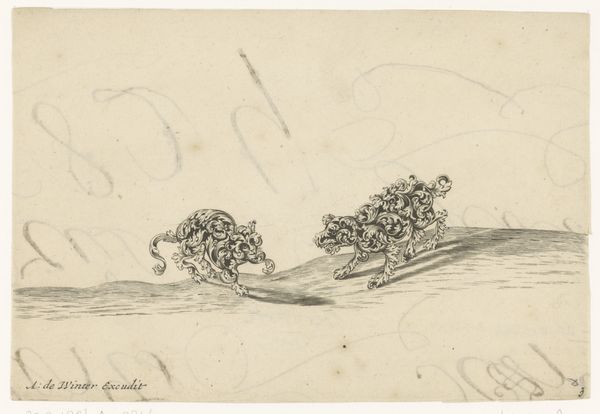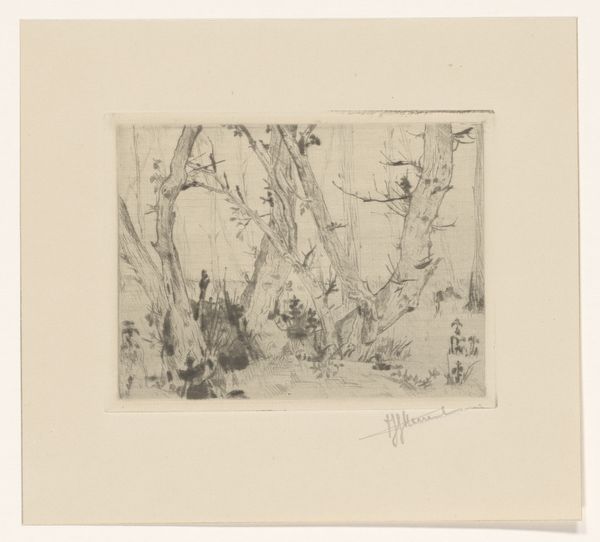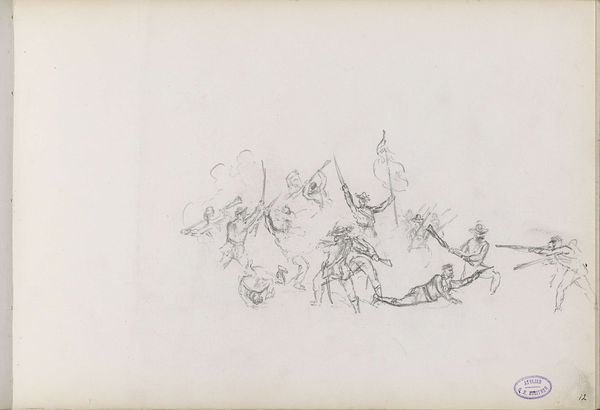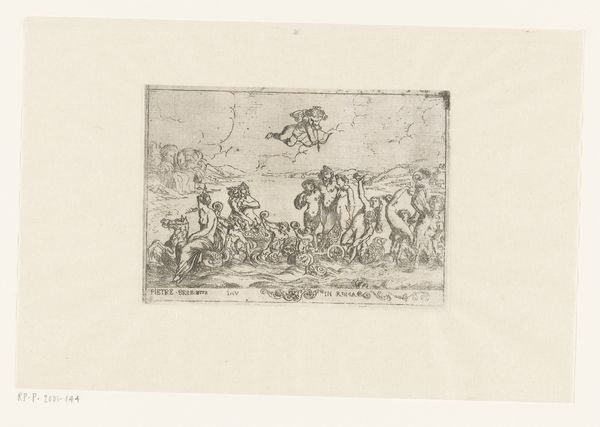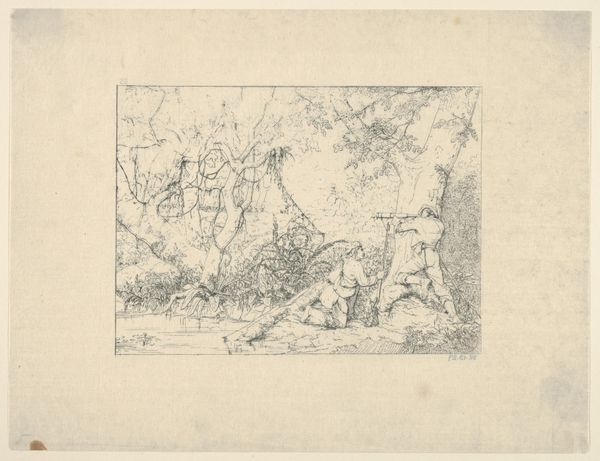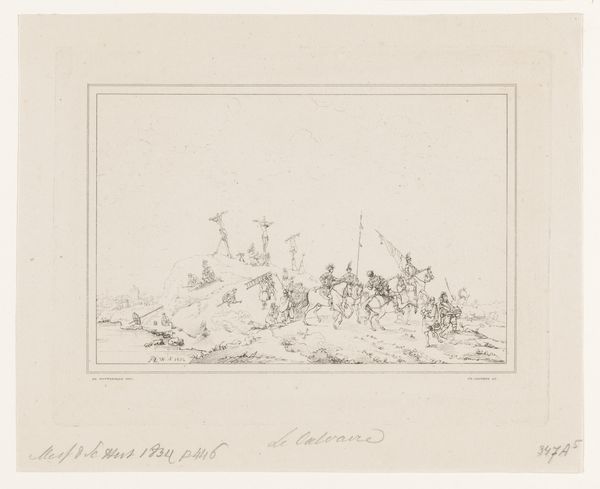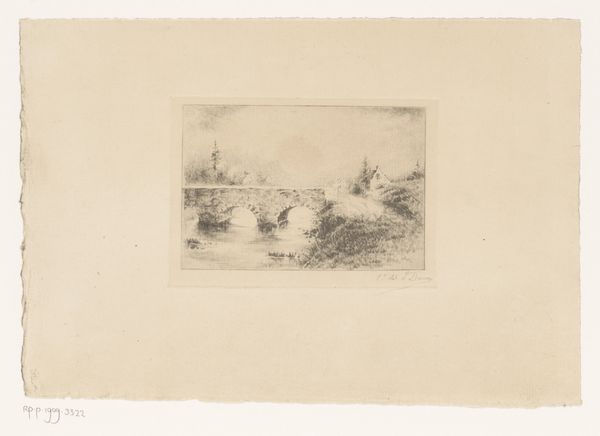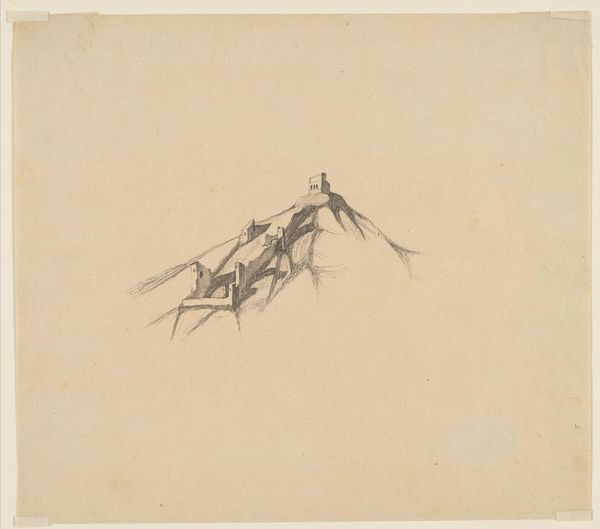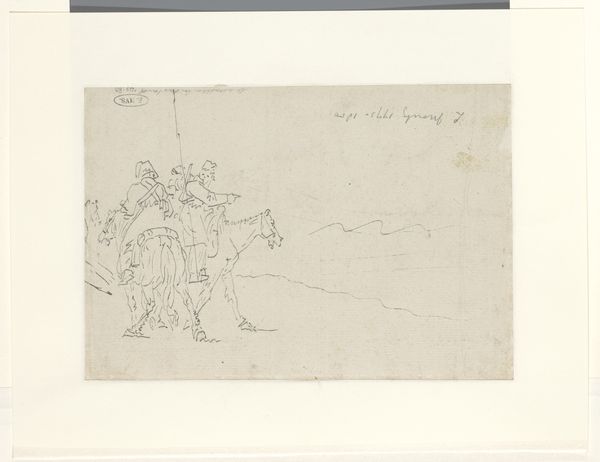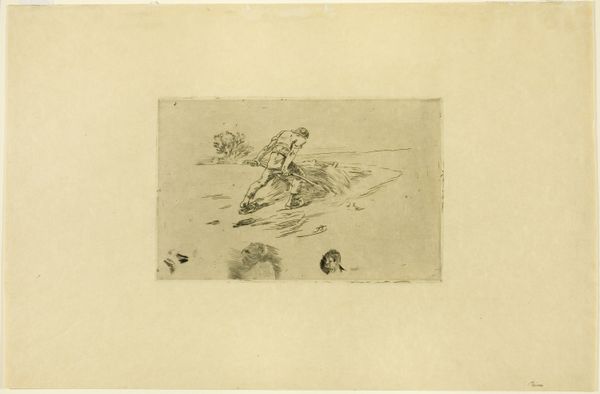
drawing, print, etching
#
drawing
# print
#
etching
#
landscape
#
group-portraits
#
history-painting
Dimensions: height 100 mm, width 182 mm
Copyright: Rijks Museum: Open Domain
Curator: Eléonore Vial’s etching, "Groep soldaten te paard," created in 1892, offers a fascinating study in historical narrative. Editor: It strikes me as oddly ethereal, considering the subject. The monochromatic palette and wispy lines give the scene an almost dreamlike quality, despite the implied motion. Curator: That’s insightful. Vial’s use of etching certainly softens what could be a harsh portrayal of military might. It’s interesting how the medium itself contributes to the work's interpretation; an etching versus, say, an oil painting alters the public perception. The scene is set on campaign; there are officers atop steeds in parade dress with lances. They drag along field guns for deployment. Editor: Absolutely. And the composition, the way the lines draw your eye from left to right—mimicking the group's progression—but in a deliberately faded and distant perspective. Note how Vial guides the eye from that cannon on the left, trailing through a series of soldiers. It is masterfully understated, while showing the pomp. Curator: We should remember, though, that "history painting," especially in the late 19th century, wasn’t necessarily about historical accuracy. These works played into a broader political discourse. This may commemorate specific conflicts, the Napoleonic wars are referenced by uniform fashion, though it could represent more the romanticism surrounding military action and nationalism, more generally. It represents society's support and the imagined heroics within conflict. Editor: That makes complete sense. Looking at the cultural moment helps explain why Vial made this choice of artistic treatment. We must look at the purpose of making a visual account of past events, considering its public reception. Curator: Exactly. And beyond the socio-political factors, there's simply an intrinsic beauty in her etching technique. Editor: I concur, considering the totality of components working to inform how society thinks of past conflicts and present nationalism through art.
Comments
No comments
Be the first to comment and join the conversation on the ultimate creative platform.
